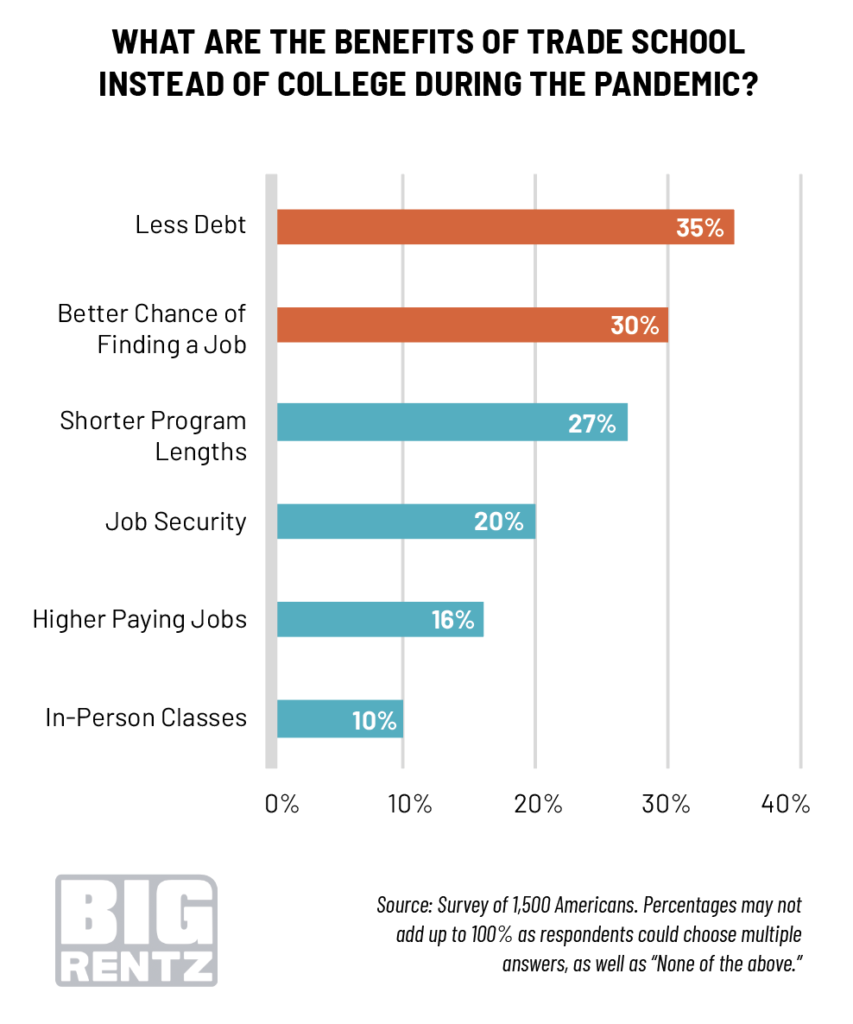Skilled trades education may be making a comeback

By David Gee
Ask anyone in the recreational boating industry about some of the biggest issues facing the industry – and we have asked, through surveys, at our Boating Industry ELEVATE Summit industry panel discussion and during our Boating Industry Leadership Council meetings – and workforce development is always at the top of the list. It’s an industry-wide, nationwide problem.
Maybe that has the potential to change in the future. At least we have some encouraging education news to report, and that is a start.
According to enrollment trends, survey data and other signs, education for the skilled trades appears to be returning to fashion.
A recent survey of high school students found the likelihood of attending a four-year school went down by more than 20% in the last year and a half — to 48%, from 71%, according to ECMC Group, a nonprofit aimed at helping students.
High schoolers are putting more emphasis on career training and post-college employment, the report found, after polling more than 1,000 high school students four times since January 2020.
Nearly half, or 46%, now say their ideal post-high school plans would require three years of college or less.
Even before the pandemic, students were starting to consider more affordable, direct-to-career alternatives to a four-year degree, said Jeremy Wheaton, ECMC Group’s president and CEO.
“The good news in here is that there’s been an uptick in the awareness of career and technical training as a pathway to a good career,” he said.
It feels anecdotally like trade careers have begun to receive higher levels of respect. Certainly, more people are becoming aware of widespread labor shortages, across all types of industries. And young people considering their career paths seem to be taking notice of alternatives, with one-third now viewing trade school as a more favorable option than college.
More evidence of shifting sentiment
In another survey by the large equipment rental company BigRentz, 35% of respondents recognized less debt as a key advantage of trade school, while 30% believe trade school offers a better chance of finding a job.
Student debt is a big deal, a $1.7 trillion deal to be exact, and the amount of debt current and former students carry has doubled in the past 10 years, according to the National Center for Education Statistics.
The NCES says the average cost of attendance for a student living on campus at a public four-year in-state institution is $25,864 per year, or $103, 456 over four years. However, only 39% of students graduate within four years. And obviously those numbers can be even higher for many colleges or universities, as many of you can do doubt attest to.
On the other hand, a trade school certificate costs on average $33,000, and programs last anywhere from six weeks to a year. As a result, the potential to save money and start earning sooner is excellent for those opting for a trade school education.
There is still a disconnect though when it comes to the trades being seen as a path to high-paying jobs. In the latest BigRentz survey, only 16% of those surveyed believed that higher paying jobs are a benefit of attending trade school.
There are certainly more opportunities than perhaps ever before for someone to train for a career in the boating industry.
The American Boat & Yacht Council (ABYC) says the list of schools and organizations that offer Marine Technician Training continues to increase every year.
At the state of the marine industry panel discussion at the Boating Industry ELEVATE Summit in November, Yamaha Marine Group president Ben Speciale noted that Yamaha has invested heavily in technical training and workforce development.
In recent years, 3,238 Introduction to Outboard Systems certificates have been earned, and several thousand students have enrolled in 107 technical school programs in 32 states, all supported by Yamaha.
Great Lakes Boat Building School, established in 2006, offers two intensive 12-month programs that prepare students to be industry-ready craftspeople and technicians. They are currently in the midst of an exciting $3.8 million capital campaign and expansion project, that will mean a new 10,000 square-foot building for instruction and hands-on skill training in marine mechanics and marine electronics.
The Marine Retailers Association of the Americas recently hired Wendy Mackie as its Director of Workforce and Foundation Development, where she will assume the lead role in operating the MRAA Educational Foundation, a 501(c)(3) charitable organization founded to provide financial support for education, training and professional development in the recreational marine industry.
“The key,” said Mackie in her hiring announcement, “is to tap into the dedicated workforce development funding streams in each area to ensure the training programs developed are sustainable. The money is there; we just need to show there is demand for the workers and that our industry’s employers will hire them.”
Experts all agree the first step in solving a problem is identifying it. I think that’s covered. I haven’t checked the first issue of Boating Industry published in 1929 (and then named Boating Business), but it might contain an article on workforce development. It seems as if people in the industry have been talking about it for almost that long.
Talking doesn’t solve the problem, but there is obviously lots of action to go with the discussion. And any time you can use words such as encouraging, good news, positive signs in the same sentence as workforce development, we’ll take it.
The future of work and the workforce is facing dramatic change driven by technology, globalization, demographics, social values, a pandemic and the changing personal expectations of employees. Hopefully there’s a bright future ahead for the men and women who want a place working in the recreational boating industry.





